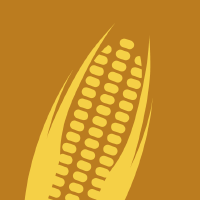Topic Editors


The Future of Farming in a Changing World: From Physiology to Technology
Topic Information
Dear Colleagues,
This Topic explores the multifaceted effects of climate change, precision agriculture technologies, and agrivoltaics on crops’ physiology, growth, yield, quality, and subsequent food processing. These factors significantly influence the agricultural economies of many nations, leading to challenges (such as water scarcity) and opportunities (like the advent of innovative technologies). Climate change manifests in diverse forms: elevated temperatures, droughts, heat waves, intense rainfall, and the emergence of new diseases, which each present unique challenges in crop production. Conversely, precision agriculture technologies offer hope, enabling resource conservation, enhanced crop management, and the efficient utilization of traditional and underutilized crop varieties. This Topic will explore these issues to provide insights and solutions that will shape future crop production strategies.
Dr. Giuseppe Ferrara
Prof. Dr. Olaniyi Amos Fawole
Topic Editors
Keywords
- climate change
- precision agriculture
- processing
- energy
- resources
Participating Journals
| Journal Name | Impact Factor | CiteScore | Launched Year | First Decision (median) | APC | |
|---|---|---|---|---|---|---|

Agriculture
|
3.6 | 3.6 | 2011 | 17.7 Days | CHF 2600 | Submit |

Agronomy
|
3.7 | 5.2 | 2011 | 15.8 Days | CHF 2600 | Submit |

Crops
|
- | - | 2021 | 30.5 Days | CHF 1000 | Submit |

Foods
|
5.2 | 5.8 | 2012 | 13.1 Days | CHF 2900 | Submit |

Plants
|
4.5 | 5.4 | 2012 | 15.3 Days | CHF 2700 | Submit |

MDPI Topics is cooperating with Preprints.org and has built a direct connection between MDPI journals and Preprints.org. Authors are encouraged to enjoy the benefits by posting a preprint at Preprints.org prior to publication:
- Immediately share your ideas ahead of publication and establish your research priority;
- Protect your idea from being stolen with this time-stamped preprint article;
- Enhance the exposure and impact of your research;
- Receive feedback from your peers in advance;
- Have it indexed in Web of Science (Preprint Citation Index), Google Scholar, Crossref, SHARE, PrePubMed, Scilit and Europe PMC.

